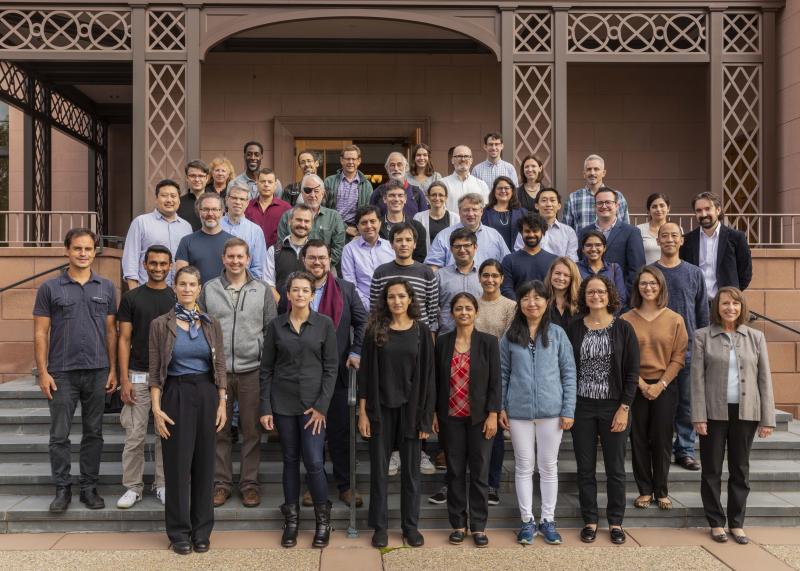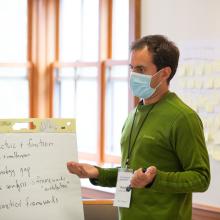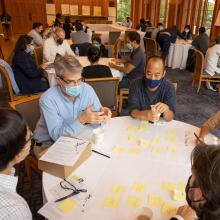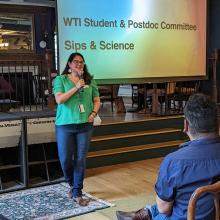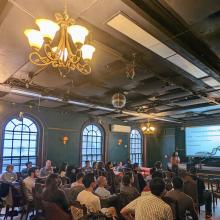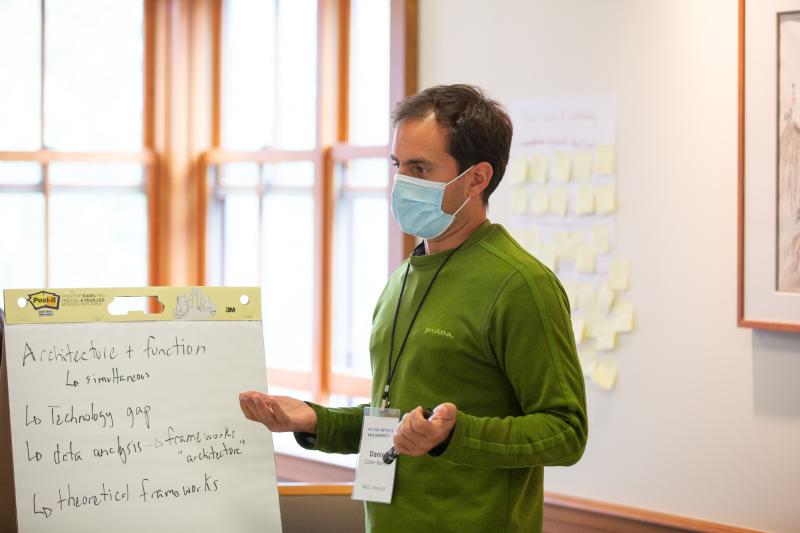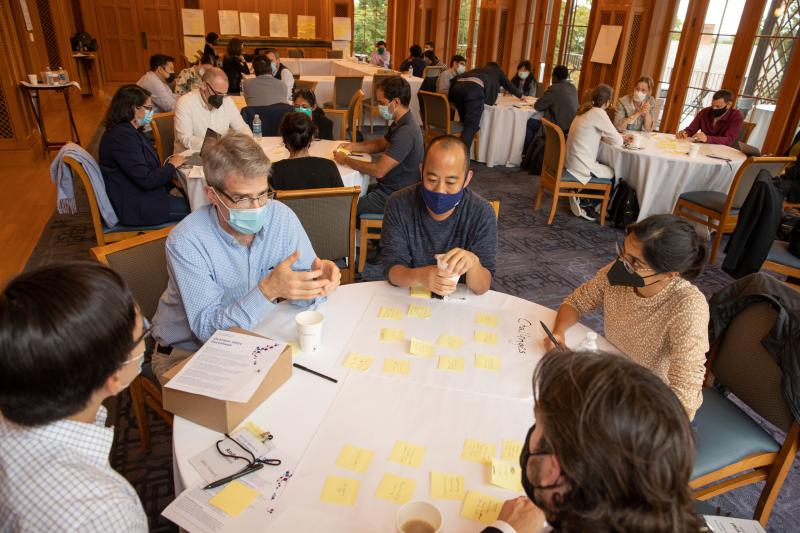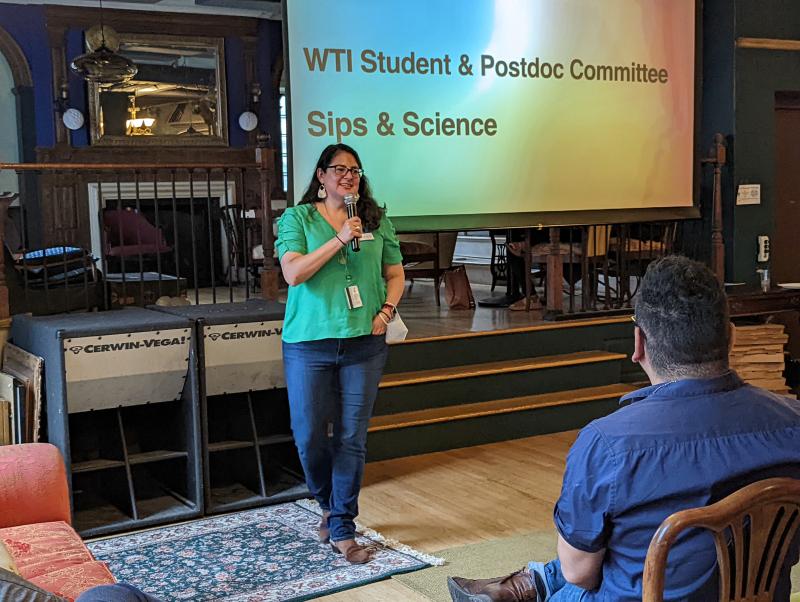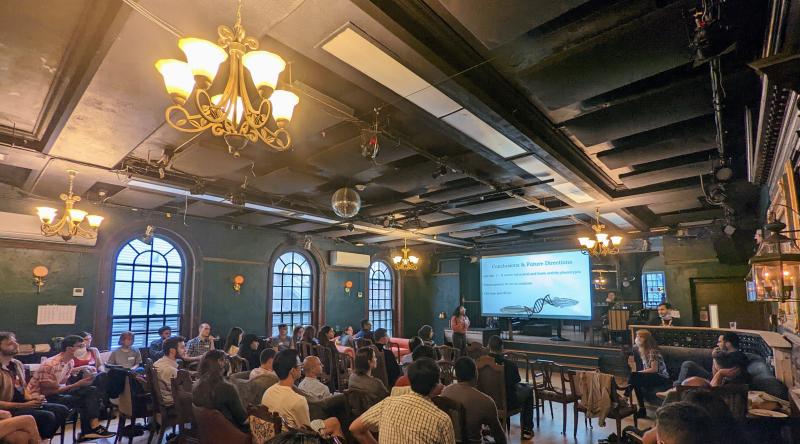Year in Review 2022
In this report, you will find highlights and reflections from the Wu Tsai Institute’s first full academic year, spanning July 2021 to June 2022.
In the last year, the Institute stimulated new research, successfully completed our first external faculty recruitment, appointed interdisciplinary postdoctoral fellows, expanded the incoming Yale graduate student class across multiple doctoral programs, provided research internships to undergraduates, made progress on our building renovation, and much more.
We hope you will explore our research, activities, and impact in greater detail in the sections below and across our entire website. Please engage with us as we continue our journey to know, together.
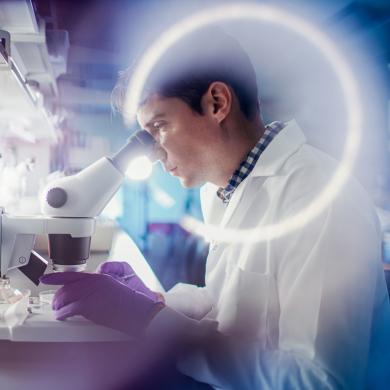
Building for tomorrow’s discoveries
The Institute started creating the physical, digital, and operational infrastructure for tomorrow’s advances in understanding human cognition. Ongoing research advances across Yale contributed to the new Institute’s foundations.
Alongside the physical buildout of the Institute, we established a relational database for tracking the people and activities of the Institute, planned a new website, and innovated policies and procedures in support of a new and interdisciplinary research environment. Key staff hires stimulated the development of programs and initiatives. Innovative activities engaged a new group of researchers and united colleagues across fields to promote interdisciplinary collaborations.
The future home of the Wu Tsai Institute is 100 College Street in New Haven, Connecticut, which is strategically positioned between Yale’s central campus and its school of medicine. Multiple floors comprising about 240,000 square feet will house the Institute’s research labs, shared facilities with cutting-edge equipment, classrooms and meeting rooms, and social spaces to promote interdisciplinary interaction.
When finished in summer 2023, the building will welcome faculty from the Institute, as well as the entire Department of Psychology from the Faculty of Arts and Sciences and Department of Neuroscience from the School of Medicine, creating a nexus for neuroscience and broadly related disciplines at Yale.




Research at the frontiers of knowledge
The Institute is physically and conceptually designed to transcend disciplinary boundaries. It sits at the university level, outside of traditional academic departments, divisions, and schools, giving members the broadest environment in which to explore the fundamentals of cognition.
The Institute contains three research centers that represent unique and complementary perspectives on how to understand human cognition. These intellectual hubs and their cutting-edge resources draw together scientists, engineers, and scholars from across Yale.
More than 130 Yale faculty from 29 departments were appointed as members of the Wu Tsai Institute and joined one or more of the centers. Below is a selection of their groundbreaking and impactful discoveries over the previous year.
Center for Neurodevelopment and Plasticity
The Center for Neurodevelopment and Plasticity explores how the brain has changed through evolution and how it develops across the lifespan.
Molecular and cellular evolution of the primate dorsolateral prefrontal cortex
From Wu Tsai Faculty Member Nenad Sestan’s research group, published in the journal Science:
This study discovered what is different between humans and non-human primates in the dorsolateral prefrontal cortex (DLPFC), a key brain region underlying human intelligence and abilities. Transcriptomic data extracted from DLPFC cells in species spanning primate evolution revealed unique and shared cell types and molecular mechanisms that could help explain human-specific cognitive functions.
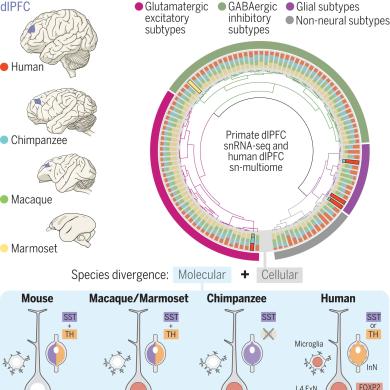
From a collaboration between Wu Tsai Faculty Members Daniel Colón-Ramos and Smita Krishnaswamy, published in the journal Nature:
This study uses a modern machine learning method known as “diffusion condensation” to reveal the structure and function of neuropil, a densely connected web of neurons, synapses, and glia common in brain tissue. Combined with precise imaging methods, this method discovered the existence of four subdivisions of neuropil in worms, each responsible for different sensory and motor behaviors, and showed how this architecture is built up across development.
From Wu Tsai Faculty Member Michael Crair’s research group, published in the journal Science:
This study discovered how the brain can prepare itself to behave intelligently early in life, even before it has benefitted from experiencing the outside world. Spontaneous waves of activity in the retina of a newborn mouse expose the brain to patterns of visual motion that will be experienced when it opens its eyes and runs through the world, helping to pre-program visual functions in the brain.
Center for Neurocognition and Behavior
The Center for Neurocognition and Behavior explores how the brain generates complex behavior, including why we perform well at some times and struggle at others.
Motor learning without movement
From Wu Tsai Faculty Member Sam McDougle’s research group, published in the journal Proceedings of the National Academy of Science:
This study reports the surprising finding that humans do not need to execute a body movement in order to learn how to perform it more effectively. Simply imagining or planning a movement in your mind leads the brain to make unconscious predictions about what should happen, and this alone is enough to improve skills, with possible benefits to everyday actions, but also to expertise in sports, music, dance, and other occupations.
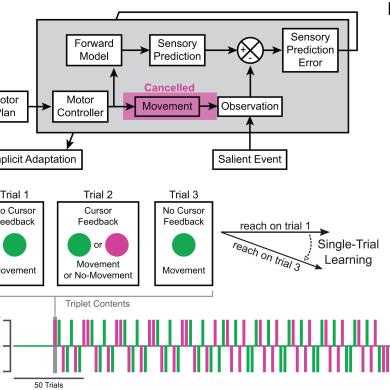
From Wu Tsai Faculty Member Marvin Chun’s research group, published in the journal Nature Human Behaviour:
This study reports that a person’s ability to pay attention can be predicted with remarkable accuracy from the connectivity of brain regions measured with functional magnetic resonance imaging (fMRI). How vigilant they are, how well they can multitask, and much they can hold in memory can all be predicted even when the person is just resting during the fMRI scan.
From Wu Tsai Faculty Member Melissa Ferguson’s research group, published in the journal Psychological Science:
This study discovered that first impressions and intuitive feelings about other people — which strongly bias how we behave and think but were previously considered to be unchangeable — can in fact be modified. Sharing relevant and believable new evidence about an acquaintance’s behavior not only impacts your conscious beliefs about the person but also your unconscious attitudes toward them.
Center for Neurocomputation and Machine Intelligence
The Center for Neurocomputation and Machine Intelligence develops new theories to make sense of noisy brain and behavioral data and to extract algorithms of the mind.
BrainGNN: Interpretable brain graph neural network for fMRI analysis
A collaboration between Wu Tsai Faculty Members James Duncan and Dustin Scheinost, published in the journal Medical Image Analysis:
This paper reports a new type of neural network that predicts cognition and behavior from fMRI activity in the human brain by representing the data as a mathematical graph with brain regions as nodes and their functional connectivity as edges. In addition to outperforming other machine learning techniques, and unlike many deep learning models, the internal workings of the model can be easily interpreted at the level of brain regions, individuals, and groups of people.
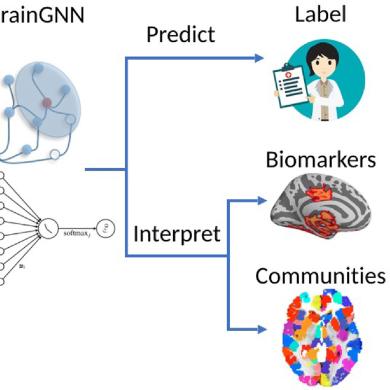
From Wu Tsai Faculty Member Julian Jara-Ettinger’s research group, published in the journal Nature Communications:
This study uses computational models to explain how humans determine whether another person’s body movements, like winks, waves, and nodes, are meant to communicate with us. Non-verbal communication like this requires inferring the other person’s mental goals that drive their actions, rather than analyzing the actions themselves, in order to discount body movements that are meant to move objects in the world rather than communicate socially.
From Wu Tsai Faculty Member Priya Panda’s research group, published on the preprint server arXiv:
This paper proposes a new computational approach (and shares the code) for building more powerful spiking neural networks, a type of model that differs from standard deep neural networks by using units that act like neurons with action potentials. Rather than assuming these models should be built like standard models, searching for optimal architectures leads to better task performance and the discovery of the importance of backward or “top-down” connections.
Stimulating new integrative research
Advancing the bold goal of understanding human cognition requires new incentives and opportunities for scientists from different disciplines to work together. To spark interdisciplinary inquiry, the Institute launched a call for multi-year Innovation Grants to support new collaborative teams of Institute faculty members to cooperate on ambitious, risky, and disruptive research ideas that may lead to transformative, unexpected discoveries.
Our theme for 2022 was “Integration” — successful proposals connected different types of tools, data, and/or models across scales and levels of analysis to identify abstract, mechanistic principles of how human cognition works. The interdisciplinary grantees represent a cross-section of scientific questions and cutting-edge methods. View the 2022 grant recipients and their projects below.
Identifying neurocognitive fingerprints of adolescent development
Adolescence is a time marked by an increase in risky and impulsive behaviors, underscoring the importance of understanding the cognitive processes that might drive these behaviors. This project applies a new statistical modeling approach to explore variability in multiple measures of cognition, including brain-based measures of network functioning and performance on neurocognitive batteries. The work examines the relationship of these measures to real-world adolescent behavior. The work seeks to provide a nuanced characterization of an individual’s cognitive functioning that may underlie observed behavioral patterns of adolescence.
Multimodal imaging to connect excitatory/inhibitory balance and connectivity
The brain is organized by a set of principles whose disruption can be a sign--or even a cause--of cognitive decline. To better understand the healthy brain and what happens when disease affects the brain, we need a means of investigating these organizational principles. To this end, we use a novel neuroimaging technology which leverages the combined strengths of three complementary cutting-edge approaches: functional magnetic resonance imaging (fMRI), optical fluorescence imaging, and positron emission tomography (PET). Together these approaches allow us to gain insights into how the brain is organized in health and disease.
Varieties of perspective taking
Human beings care about others and can intentionally adopt their perspectives. This capacity is called empathy, and is held to be manipulable, perhaps in service of a more cohesive society. This project aims to uncover the basic building blocks of spontaneous perspective taking, and to relate them to higher-level measures of empathy, so that we can better understand and appropriately encourage their engagement.
Domain-general neural algorithms for motion detection
The world is constantly in motion, making motion detection a crucial feature of our brain’s perceptual systems. Although a powerful framework has been developed for explaining how the visual system detects motion, less is known about how the brain computes motion signals on our body or in dynamic sound frequencies. In this proposal, our goal is to integrate neural algorithms for motion detection across these three disparate perceptual systems.
Recruiting researchers and establishing communities
Extraordinary research arises from extraordinary researchers. The Institute is committed to identifying and supporting a diverse pool of talented scientists who represent a wide range of scientific backgrounds and personal experiences.
We launched the first application cycle for hiring Institute faculty, the first recruitment of postdoctoral fellows, the first nominations of graduate fellows, and the first cohort of undergraduate summer internships. Each of these programs was built from the ground up to enhance equity and inclusion through broad dissemination and targeted outreach; review processes that minimize bias; representation across disciplines and demographics; regular consultation with the university community; incorporation of cultural norms and practices; cohort-building and professional development opportunities; and regular self-evaluation.
Faculty recruitment
The Institute pioneered new ways to recruit faculty across departments and schools at Yale to better identify talented researchers who will advance the Institute’s mission and embody its values. We searched for candidates who could contribute to any area of relevance to the Institute, at all professorial ranks, and we centered best practices for diversity.
By putting applicants ahead of potential department affiliations, we considered hundreds of candidates from a range of fields, including applied math, biology, cognitive science, computer science, data science, engineering, neuroscience, and psychology. These applicants were first reviewed for their potential to contribute to the WTI mission by a university-wide hiring committee chaired by the Institute’s faculty directors and composed of Wu Tsai Faculty Members from multiple departments. Successful applicants were then reviewed carefully at a second stage by a subcommittee of members with subject-matter expertise, supplemented by other Yale experts from relevant departments. Through this broadly inclusive hiring process, we prioritized the interdisciplinary inquiry into human cognition that is at the heart of the WTI mission.
The process resulted in the successful recruitment of a new Institute faculty member in partnership with the Department of Neuroscience. We are delighted to welcome Emilia Favuzzi, PhD, who will begin as an Assistant Professor in summer 2023. Dr. Favuzzi’s research focuses on how the brain develops by examining how circuits grow and specialize for different cognitive functions. She studies the role of glia in this process, an abundant yet often neglected type of cell sometimes called the “dark matter” of the brain.
Dr. Favuzzi was one of a number of faculty hires enabled directly or indirectly by the Institute. By catalyzing and supporting additional faculty searches in departments across Yale, from Linguistics to Biomedical Engineering, the Institute further expanded the ranks of faculty whose research will advance understanding of human cognition.

The Department of Biomedical Engineering’s 2022 faculty search culminated in the hiring of Dr. Cristina Rodriguez as Assistant Professor. She is building next-generation, high-resolution optical imaging technologies that transform how we study the brain. The Wu Tsai Institute played a critical role in bringing Dr. Rodriguez to Yale by actively welcoming her into an interdisciplinary neuroscience community in which her work can be inspired and deployed.
James Duncan, Chair and Ebenezer K. Hunt Professor in Department of Biomedical Engineering
Postdoctoral Fellows
The first cohort of Wu Tsai Postdoctoral Fellows were recruited to Yale from a range of fields, countries, and backgrounds and are united in their pursuit of new discoveries to advance our understanding of human cognition. These postdocs receive the freedom, resources, and mentorship to bridge fields and techniques and drive interdisciplinary breakthroughs. Fellows applied to work on specific projects and be jointly mentored by two or more Wu Tsai Institute faculty members working in different departments, research areas, levels of analysis, and/or techniques. This novel, project-based, co-mentored appointment creates an interdisciplinary environment for each postdoc.
Five of the Fellows arrived on campus in the past year (departments of co-mentors in parentheses): De-Shaine Murray (Neurology, Computer Science, Electrical Engineering); Meng Jia (Psychiatry, Neurology); Josué Ortega Caro (Neuroscience, Computer Science); Weikang Shi (Psychology, Neuroscience, Psychiatry); and Jacob Miller (Psychiatry, Neuroscience).
Graduate Fellows
We initiated the first call for Wu Tsai Graduate Fellows in Fall 2021 by inviting all doctoral programs across Yale to nominate applicants whose interests aligned with the WTI mission and who demonstrated a commitment to diversity. This openness to students from any doctoral program resulted in a cohort of nine Wu Tsai Graduate Fellows that enrich the Institute through a wide spectrum of disciplinary interests and doctoral program affiliations, including neuroscience, cognitive psychology, biophysics, biomedical engineering, robotics, pharmacology, and physiology. Because applicants selected for the fellowship earned their program an additional admissions slot for someone whose interests also aligned with the WTI mission, an additional eight PhD students interested in cognition were recruited to Yale. Providing graduate students with access to cutting-edge resources, tools, and ideas in WTI will lead to a new generation of scientists poised to drive the next wave of interdisciplinary discovery.
Undergraduate Summer Scholars
The Institute celebrated the accomplishments of Yale College undergraduates who pursued mentored summer research in cognition-related topics. Twelve students across nine majors worked under the mentorship of Yale faculty across fields including computer science, biophysics, molecular and cellular biology, neuroscience, psychiatry, psychology, and data science. Students benefited from professional development activities and panel discussions as they enriched their network with the Wu Tsai Institute community.

I saw how collaborative and intersectional neuroscience can be: a field that is not only based on biochemical understandings of neurons like what my own research focused on, but also machine learning, modeling, cognition, and behavior. Participating in the Wu Tsai Institute summer research program has allowed me to better situate both my research and myself as a piece of a larger puzzle, having taught me about all the different methods and disciplines that can be used towards advancing our understanding of the mind, as well as providing a larger community of student researchers and scholars to learn from and share knowledge with.
Alice Zhang, Wu Tsai Undergraduate Summer Scholar 2021
Leadership and governance
Over the past year, the Wu Tsai Institute was led collaboratively by Institute Director Nick Turk-Browne, Associate Directors Daniel Colón-Ramos and John Lafferty, and Managing Director Kelley Remole, with support and guidance from advisory bodies.
Steering Committee
Comprised of Yale deans, chairs, and faculty representing a range of schools and departments, the Institute’s Steering Committee marked its first full academic year of operation. The committee met three times with Institute leadership to review progress, offer feedback and ideas from their communities, provide guidance on strategies and initiatives, and coordinate how to disseminate and champion these activities to the university at large.

Student and Postdoc Committee
The role of students and postdocs in WTI was formalized last year through the creation of the Student and Postdoc Committee (SPC). This group provides input and advice to the Institute leadership on trainee interests, experiences, and needs. SPC will also launch initiatives to enhance community, professional development, scientific cross-pollination, and personal well-being.
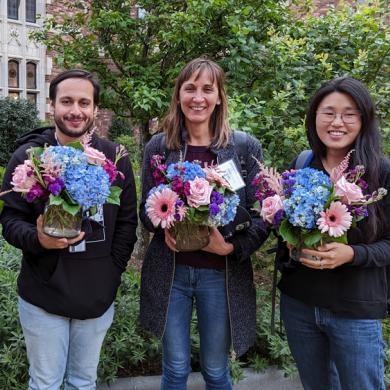
Institute events
Undergraduate Scholars Poster Session, August 2021
Undergraduate Scholars presented the results of their summer mentored lab research experiences to the wider Yale community. The 12 students were joined by their advisors, peers, families, and the WTI staff and leadership to celebrate their new skills and findings.
Retreat for Working Groups, October 2021
An expansive and diverse group of Yale scientists who had a substantial role in the initial planning for the Institute gathered for a day-long retreat at Yale’s Maurice R. Greenberg Conference Center. Many of the 37 faculty from 17 departments were meeting for the first time in-person, after only working together virtually. They exchanged ideas and identified pressing research questions, opportunities, and challenges for the next decade at the Institute. They left the day with new connections and ideas, buoyed by the potential to advance the understanding of human cognition.
Integration Conference, January 2022
Yale researchers convened for virtual talks by WTI faculty about current and future interdisciplinary research to advance the understanding of human cognition. Under the theme of “Integration,” presentations illuminated and fostered collaborative research bridging neuroscience data and theories across scales, techniques, species, and fields. A total of 14 speakers spanned 13 departments and garnered 228 unique participants online.
Self and Society Initiative, February 2022
Scientists and clinicians joined colleagues in philosophy, law, and economics for a day-long retreat. Eleven faculty from seven departments across three schools explored ways to bridge the science of the brain with our subjective understanding of the self. The discussions explored the societal and ethical implications of these interdisciplinary pursuits.
Sips and Science, June 2022
The WTI Student and Postdoc Committee held “Sips & Science” at Gryphon’s, Yale’s graduate student pub, featuring networking opportunities and flash talks by graduate students and postdocs whose work was selected to represent the themes of the three centers of the Institute.
Acknowledgments
We are grateful to Clara Wu Tsai and Joseph C. Tsai, Esq., ’86, ’90 J.D. for their transformational gift to establish the Wu Tsai Institute and for their ongoing support.
“The world’s great universities are built to pursue consequential questions, and nothing is more foundational than understanding the mystery of the human brain,” Joe Tsai said.
“Interdisciplinary collaboration is fundamental to success in the life sciences field,” said Clara Wu Tsai. “Our foundation is built on that very premise, and, in all of our efforts, Joe and I work to bring great scientists together across fields and areas of expertise. From the maturation of the mind and brain to the development of new cognitive computational models and the study of human behavior, scientists at the Wu Tsai Institute will be working on the very cutting edge of the cognitive sciences.”

We also thank the following for their generous support this year: Sandra '96 LAW and Hugh '96 LAW Lawson for WTI Programmatic Support; Susannah and Jim Adelson P'20 through the Susannah and Jim Adelson Endowment for Brain Research; and GG Technologies and chief executive officer, Wei Huang, through the GG Technologies Resource Fund for Human Brain Decoding.

























